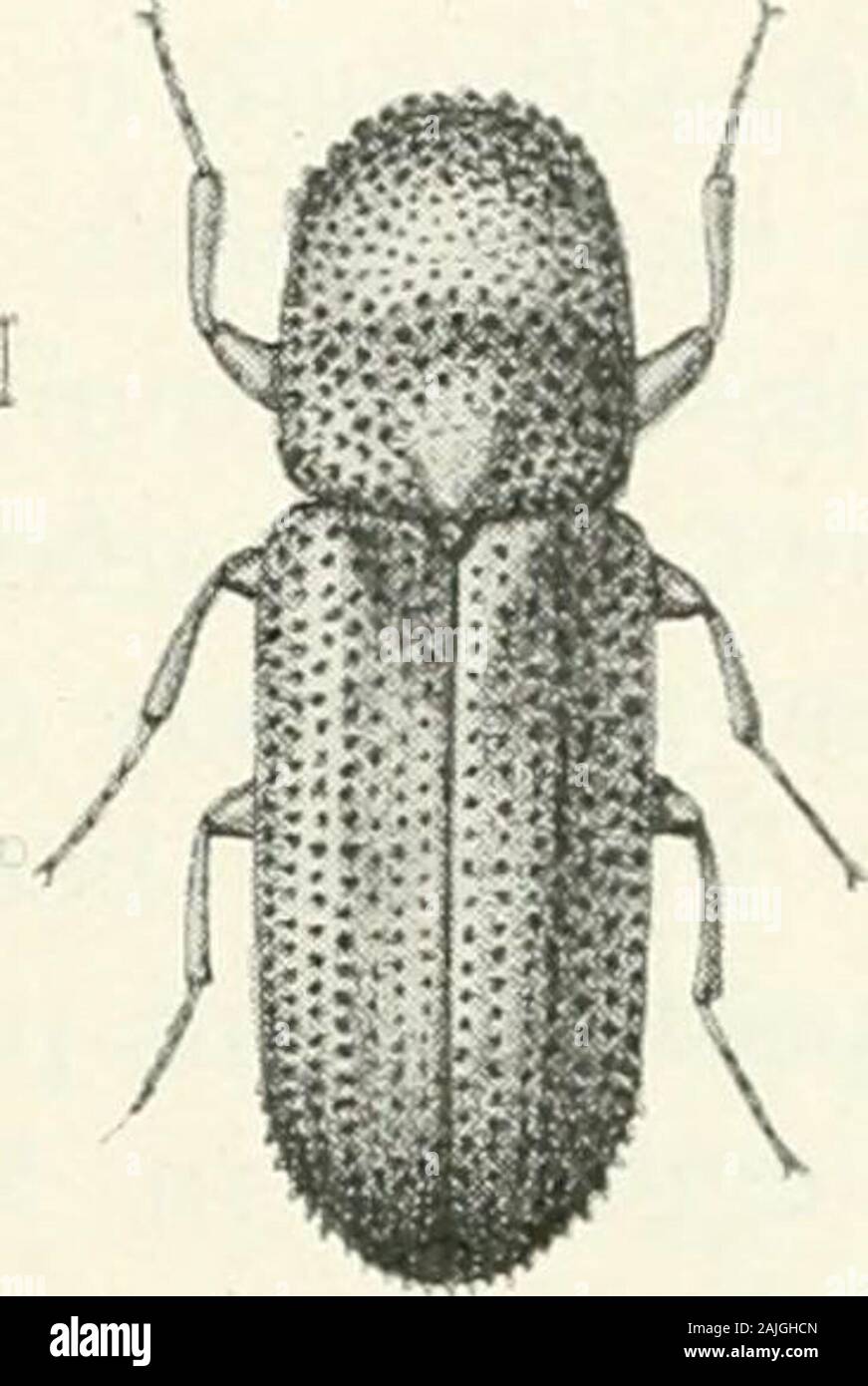Indian forest insects of economic importance Coleoptera . s work to follow Colonel Sampson. FAMILY SCOLYTIDAE 499 Crypturgus pusillus, Gyll. REFERENCE.—Stebbing, Depart. Notes (Polygraphus minimus), i, 252. Habitat.— North-West Himalaya. Tree Attacked. - The Blue Pine (Finns excelsa) ; Spruce (Picea morinda). Beetle.—The beetle is very small, black, moderately shining, with elytra covered with scattered longish white hairs. Head small, vertical in front, with a very short rostrum. Antennae short ; scape thick, straight ;Description. funiculus five-jointed ; club compact, flat- tened, ovate ; e

Image details
Contributor:
The Reading Room / Alamy Stock PhotoImage ID:
2AJGHCNFile size:
7.1 MB (209.2 KB Compressed download)Releases:
Model - no | Property - noDo I need a release?Dimensions:
1294 x 1931 px | 21.9 x 32.7 cm | 8.6 x 12.9 inches | 150dpiMore information:
This image is a public domain image, which means either that copyright has expired in the image or the copyright holder has waived their copyright. Alamy charges you a fee for access to the high resolution copy of the image.
This image could have imperfections as it’s either historical or reportage.
Indian forest insects of economic importance Coleoptera . s work to follow Colonel Sampson. FAMILY SCOLYTIDAE 499 Crypturgus pusillus, Gyll. REFERENCE.—Stebbing, Depart. Notes (Polygraphus minimus), i, 252. Habitat.— North-West Himalaya. Tree Attacked. - The Blue Pine (Finns excelsa) ; Spruce (Picea morinda). Beetle.—The beetle is very small, black, moderately shining, with elytra covered with scattered longish white hairs. Head small, vertical in front, with a very short rostrum. Antennae short ; scape thick, straight ;Description. funiculus five-jointed ; club compact, flat- tened, ovate ; eyes oval. Prothorax cylin-drical, narrower in front than behind, and uniformly pitted. Elytrafairly long, rounded at the posterior declivity, not wider than pro-thorax behind, pitted. Thighs of legs long-oval. Tibiae finelytoothed on their external edge; tarsus filiform, the first threejoints of equal size, the third not bilobed. The three intermediatesegments of the abdomen of same size and short. Antennae andlegs yellowish brown. Length, i.i mm.. Larva.—The larva is a minute white curved grub. FIG. 325. Crypturgus pusillus, Gyll. North - West Himalaya. This minute scolytid is very plentiful in the Western Himalaya, where it is Life History. to be found infesting both the blue pine and spruce. It only comes into the tree when the bark has commenced to dry, appearing at the time when a generation of theTomiciis ribbentropi is maturing and leaving the tree. The insect mayoften be found in company with Polygraphus pini. So far as obser-vations go it only infests the main stem of the tree, and only appearsin the inner bast. The male beetle tunnels through the bark of poles which have nearly reached their maximum heightdevelopment, or into that of old trees, and eatsout a pairing-chamber which is of considerablesize, though it is mostly hidden by a thin layer ofthe inner bark. From this central chamber a numberof tiny curving galleries take off and ramify, each ofwhich is